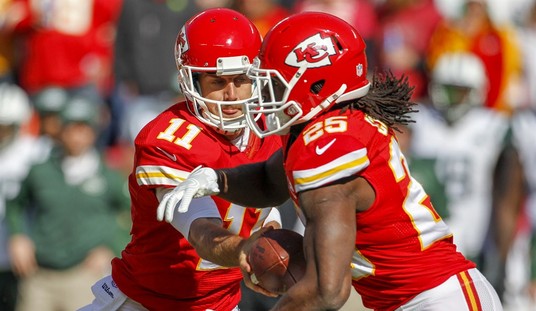A rare instance in which the words “honest” and “@nytimes editorial” are used in the same sentence! https://t.co/v1ApH97IoB
— Mícheál Breathnach (@dkahanerules) July 9, 2017
The case of Palin v. New York Times has now begun its day in federal court, with the Times arguing that the suit should be dismissed:
Sarah Palin’s defamation lawsuit against The New York Times should be tossed because the paper made “an honest mistake” when it said she incited a 2011 shooting that severely wounded Arizona Rep. Gabby Giffords and killed six people, a lawyer for the Gray Lady said on Friday. “There was an honest mistake in posting the editorial,” lawyer David Schultz told Manhattan federal Judge Jed Rakoff.
On Friday, Palin’s lawyers argued that the Times knew the story was false. “It was literally acknowledged the same day in another story in their paper,” said Kenneth Turkel.
As I pointed out in this space earlier this month, I think Palin has a strong case. Defamation suits brought by public figures generally founder on the malice/reckless disregard provisions of the applicable laws, as determined by the Supreme Court in the landmark Sullivan decision, which coincidentally enough also involved the Times.
It was 1960 and the Civil Rights Movement was gaining strength. Civil rights leaders ran a full-page ad in the New York Times to raise funds to help civil rights leaders, including Martin Luther King, Jr. Sixty well-known Americans signed it. The ad described what it called “ an unprecedented wave of terror” of police actions against peaceful demonstrators in Montgomery, Alabama. What it described was mostly accurate, but some of the charges in the ad were not true. For example, the ad said that police “ringed” a college campus where protestors were, but this charge was exaggerated. The ad also contained the false statement: “When the entire student body protested to state authorities by refusing to re-register, their dining hall was padlocked in an attempt to starve them into submission.”
L.B. Sullivan was one of three people in charge of police in Montgomery. He sued the New York Times for libel (printing something they knew was false and would cause harm). The ad did not mention Sullivan’s name. But Sullivan claimed that the ad implied his responsibility for the actions of the police. He said that the ad damaged his reputation in the community. In the Alabama court, Sullivan won his case and the New York Times was ordered to pay $500,000 in damages.
In a unanimous decision, the United States Supreme Court ruled in favor of the New York Times. In order to prove libel, a “public official” must show that the newspaper acted “with ‘actual malice’–that is, with knowledge that it was false or with reckless disregard” for truth. The Court asserted America’s “profound national commitment to the principle that debate on public issues should be uninhibited, robust, and wide-open.” Free and open debate about the conduct of public officials, the Court reasoned, was more important than occasional, honest factual errors that might hurt or damage officials’ reputations.
It’s imperative to keep in mind that this decision was handed down in the middle of the Civil Rights movement, when passions were inflamed on both sides. In retrospect, we can see that the movement was the long-delayed end game of Reconstruction, against which Southern Democrats had been fighting a rearguard action for decades. And so it’s possible that the court’s decision was as much swayed by the specific time and place of the case (Montgomery, Ala., January 1964) as by the general principle; who can doubt that the members of the Warren court — Black, Goldberg, Brennan, Douglas, Clark, White, Stewart and Harlan — had little sympathy for the defendant? Further, Sullivan’s name was never mentioned — whereas in this case, Palin’s name very much was:
This paragraph in today’s NYT editorial on Alexandria shootings is offensively, quasi-Stalinistically wrong: https://t.co/nWhhcHfMso pic.twitter.com/LkJFifUh73
— Jeff B/DDHQ (@EsotericCD) June 15, 2017
Over at Power Line, John Hinderaker weighs in:
The Times said that Palin’s “incitement,” which it described wrongly, had a “clear” and “direct” connection to the murder of six people and wounding of several more. That is obviously a very serious charge. And yet, as the Times now admits, there is not a shred of evidence to support it. In fact, we don’t know whether the murderer, Jared Loughner, had ever heard of Sarah Palin. There is zero reason to think that he ever saw her political action committee’s map of “targeted” districts.
So, how can accusing a person of having a “clear” and “direct” causal connection to six murders, without a shred of evidence, possibly be an “honest mistake”? Isn’t it a textbook case of reckless disregard?
Ms. Palin can make a strong argument that the Times editorialists knew that their smear was a lie, based on reporting done by the Times itself. (The editorialists’ defense likely will have to be that they don’t read their own newspaper.) But at a minimum, it seems that the Times editorial was published with reckless disregard for whether it was true or not. It was a product of sheer hatred toward Palin… Sarah Palin’s lawsuit against the Times is the rare case where it is hard to see how the paper will be able to mount a defense.
Agree. Even under the Sullivan standard, the Times through its editorial carelessness has left itself wide open to a huge judgment against it. They’d be smart to settle, with an abject apology and a significant cash outlay. But they won’t, because being a Leftist means never having to genuinely say you’re sorry. Should the case go all the way to the Supreme Court, look for a nasty verdict against the Gray Lady, who really does have it coming. Yes, public debate should be “uninhibited, robust, and wide-open.” But it should also be honest — and not in the sense of an “honest mistake.”









Join the conversation as a VIP Member